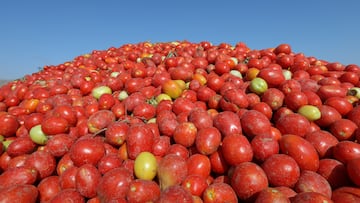Why you shouldn’t refrigerate tomatoes
It’s common practice to put tomatoes in the refrigerator after coming home from the grocery store. However, this could have a negative effect on the produce.

We don’t give it a second thought- we usually put tomatoes in the refrigerator after coming home from a grocery run. This seems like common sense, as putting them in colder temperatures does slow down ripening and extends their shelf life.
However, the longer life of tomatoes resulting from refrigeration comes at a cost that could be too high for those with sensitive palates: chilling these fruits could result in a loss of flavor and texture. It is best to consider certain factors when deciding where to put produce.
Thinking about food storage, particularly fruit, can affect the quality of the items, not just in the case of tomatoes. For example, if you haven’t been thinking about how to keep bananas properly, you’re losing out.
READ ALSO: Up your smoothie game with this one fruit
READ ALSO: This fruit is a plum source of vitamin C
Why you shouldn’t refrigerate tomatoes
University of Florida scientists found that due to the genes of tomatoes which are altered by low temperatures, cooling them below 54 degrees Fahrenheit stops them from creating substances that are responsible for their flavor. In other words, the cold negatively affects the taste of your tomatoes, making them blander.
Unfortunately, exposure to cold temperatures does not only take place when you put the produce in the fridge. If you bought them from large industrial operations, it is highly likely that they have already been refrigerated on their way to you.
READ ALSO: You’re bananas if you ignore this top fruit-storage tip
One way to offset the effect of refrigeration is to leave the tomatoes out to once again reach room temperature before eating them. However, this does not totally restore their taste to pre-chilling levels.
The cold, at least, does not affect the nutrients of tomatoes. So refrigerate them without worrying that they’ll lose their vitamin C, though it doesn’t have as much of this vitamin as the kakadu plum.
READ ALSO: The fruits that can help you get better shuteye
What is the right way to store tomatoes?
Deciding where to keep your tomatoes largely depends on their state of ripeness, when you intend to eat them, and what you prioritize- shelf life, or taste.
If the fruit is underripe, it is best to put them on your countertop to let them develop flavor as they ripen. If possible, eat the tomatoes as soon as they are fully ripe, as this is when they reach the peak of their taste.
If you find that the tomatoes you have left in the pantry or on the kitchen counter are on the verge of being overripe and you don’t intend to eat them immediately, you can put them in the refrigerator to keep them from going bad. When you do decide to consume the tomatoes, leave them out to let them return to room temperature before enjoying.
If you prioritize shelf like, don’t mind a blander taste, and want to avoid constantly worrying about whether your tomatoes are becoming overripe, the refrigerator could be the best option for you.






